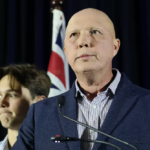Sustainability and resilience in times of crisis: Understanding Western Sydney’s disadvantage

Communities in Greater Sydney are increasingly facing crises; some are familiar but unpredictable, such as bushfires or floods, and some are very new as Coronavirus 2019 (COVID-19). It is hard to predict where or when, or how the disaster will strike.
However, sustainability and resilience can support communities in dealing with such challenges and pull them through uncertain times. Community resilience and sustainability are connected to social, human, economic, physical, institutional, environmental, or natural capitals.
Figure: Sustainability and resilience indicators applied in this analysis—source: authors by collecting concepts from various literature.
Western Sydney – lower sustainability and poor resilience
Sydney, the state capital of New South Wales (NSW), is ranked as one of the world’s most liveable cities. Due to rapid economic and population growth, it has been fast expanding. Though substantial urban growth and development are taking place in Sydney, some regions lag in providing their residents with the essential resources and opportunities.
The figure below shows that the below-average socio-economic advantage areas are mostly in Greater Western Sydney, and the above-average advantage areas are situated in Eastern and Northern Sydney. Western Sydney is a large metropolitan region of Greater Sydney that contains 44% of Sydney’s population. It is anticipated to absorb two-thirds of the Greater Sydney population by 2036.
Figure: The socio-economic advantage areas in Sydney. Source: Drawn by authors using Australian Bureau of Statistics (ABS) data.
The table below shows that Western Sydney residents live in higher density areas with poor internet connectivity. They have lower educational attainments, lower incomes and higher unemployment. They carry out manual jobs and travel long distances for work. Western Sydney areas also have a high concentration of ethnic migrant communities with poor proficiency in English. Conversely, the rest of Sydney residents are in much better condition compared to Western Sydney.
 Table: Community’s capacities. Source: Generated by authors using Australian Bureau of Statistics (ABS) 2016 Census data.
Table: Community’s capacities. Source: Generated by authors using Australian Bureau of Statistics (ABS) 2016 Census data.
Western Sydney is also climatically disadvantaged. Western Sydney is often 5–10 degrees Celsius hotter in summer and has half the annual rainfall of Northeastern parts of Sydney. Greater Sydney Commission documents indicate that the average hot days are significantly higher in Western Sydney areas; conversely, the tree canopy cover is much lower than in the East.
In January 2020, when bushfires and heatwaves pounded Sydney, parts of Western Sydney recorded a temperature of up to 52.0 degrees Celsius, making it one of the hottest places on the earth. It is predicted that Western Sydney will be too hot for people to live in ‘within decades’.
Given the above analysis, this exploration contends that Western Sydney communities are experiencing lower sustainability and poor resilience.
Disparities in Opportunities
Western Sydney residents face significant sustainability and resilient challenges due to the lack of amenities and employment opportunities. The figure below shows Sydney Local Government Areas (LGAs) Index of Education and Occupation (IEO) percentage of decile ten areas, revealing communities’ educational and occupational levels.
The map shows the percentage of the population in each LGA that belongs to the top decile where 100% population of Hunters Hill, Ku-ring-gai, Lane Cove, Mosman, North Sydney, Sydney City, Waverley, Willoughby and Woollahra LGAs population belongs to IEO top decile.
On the other hand, 0% of Blacktown, Blue Mountains, Camden, Campbelltown, Canterbury-Bankstown, Cumberland, Fairfield, Hawkesbury, Liverpool, Penrith and Wollondilly LGAs belongs to the top decile. 11 of 13 Western Sydney LGAs educational and occupational level of communities is at the bottom.
Figure: Sydney LGAs IEO percentage of decile 10. Source: Drawn by authors using Australian Bureau of Statistics (ABS) 2016 data.
Community sustainability and resilience in times of crisis
Community resilience and sustainability are increasingly gaining attention as communities face numerous disasters. Western Sydney is particularly at risk of the effects of climate change, heatwaves, bushfires, droughts, floods and the recent COVID-19 catastrophe is a new addition. Western Sydney residents work much more in sectors in which the nature of work does not lend itself to telecommuting or work from home to abide by COVID-19 restrictions.
It also comprises a massive migrant population; underprivileged groups and essential workers have a higher chance of virus infection. Besides, in the recent COVID-19 situation, Western Sydney residents have been poorly communicated to and forced to wait for vaccines. Thus, the struggle of Western Sydney residents to the crisis is more challenging than in other areas of Sydney.
Priorities for disadvantaged Western Sydney
Western Sydney keeps Sydney running and has substantial significance to the rest of the country. The disadvantaged Western Sydney communities require evidence-based, long-term, and inclusive strategic responses concentrating on broader education opportunities, creative economy, better health, balanced urban growth, and smart living environments to forming sustainability and resilience.
This article was written by Khandakar Farid Uddin and Dr Awais Piracha, an Associate Professor at the School of Social Sciences, Western Sydney University and a trained civil and environmental engineer as well as a town planner. His research and teaching experience lies in urban, environmental, transport and regional planning.
Khandakar Al Farid Uddin is a PhD candidate is a Doctoral Research Candidate at Western Sydney University. His research explores planning policies and intra-urban inequalities in Greater Sydney and his interests encompass local government, public policy, governance, urban planning and policy reform issues.















